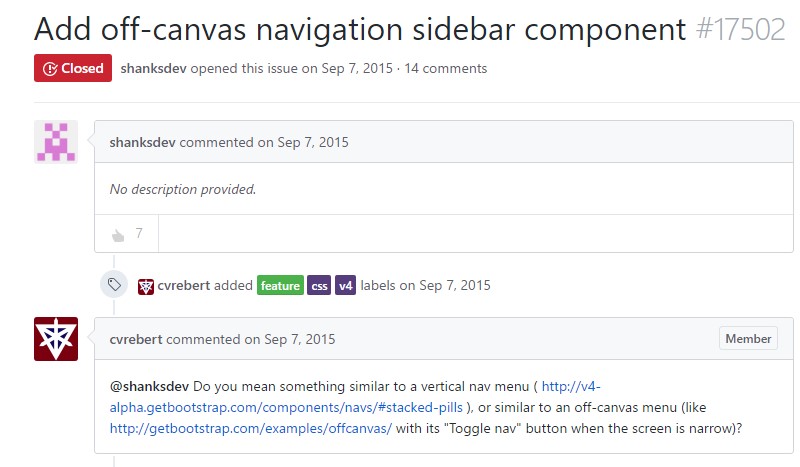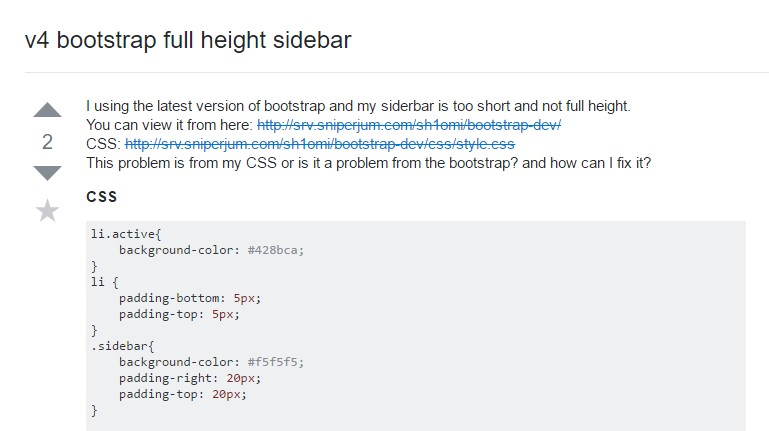Bootstrap Sidebar Working
Intro
Throughout the most of the pages we just recently see the material escalates from edge to edge in width with a handy navigation bar above and just conveniently becomes resized as soon as the defined viewport is reached and so more or less the showcased web content fluently uses the whole entire width of the page obtainable. However at a specific instances the desired goal the pages ought to provide require along with the fluently resizing material area an additional area of the obtainable display screen width to get assigned to a still vertical component with several hyperlinks and information inside it-- in shorts-- the famous from the past Bootstrap Sidebar element is needed.
The best way to put into action the Bootstrap Sidebar Responsive:
This is pretty old approach but in case you really want to-- you are able to set up a sidebar component with the Bootstrap 4 system which in turn together with its flexible grid system additionally provide a number of classes intendeded specifically for setting up a secondary level navigation menus being certainly docked along the page.
However let us begin it easy-- via just nesting some rows and columns -- It is expected this could be the simplest solution. And also by nesting I indicate you have the ability to gave a .row component set within a column one-- it typically functions the similar solution besides the obtainable columns in a single line limit-- if you nest a row inside a column you can surely have up to the column's width extending inner columns inside it just before they wrap to a new line.
And so let us say we wish a right aligned Bootstrap Sidebar Collapse together with some web content inside it and a principal page to the left of it. We must set the grid tier down to which we need to maintain this alignment prior to the sidebar and the main web content stack above each other-- let's say-- medium and up. And so a workable approach accomplishing this might be this:
1st we need to have a container element to keep the columns and rows and since we are actually building something a bit more challenging the .container-fluid class might be the best one to delegate it to-- in this manner it will constantly spread over the entire visible width available.
Next we need a .row to cover the primary system into which in our case would be a wide column for the content and a more compact-- for the sidebar-- let's say we'll split up the width in 9 by 3 columns in width. Therefore the very first column element should possess .col-md-9 and the 2nd one - .col-md-3 class utilized.
Next within these particular columns we have the ability to just make some supplemental .row components and stuff them up up with some material creating primarily the main page and after it-- the materials of the sidebar like two smaller web pages laid out side by side.
A number of more recommendations
Additionally in case you need to create a sidebar navigation menu along with the desired .col-* class you can assign it the .sidebar class and wrap the page’s main content into a <main> element applying it the rest width with a .col-* class and appropriate offset equal to the sidebar’s width to make the nicely display side by side.
Additionally in case you must create a sidebar navigation menu together with the needed .col-* class you are able to delegate it the .sidebarclass and wrap the webpage's main content into a <main> element utilizing it the rest size by using a .col-* class and correct offset identical to the sidebar's width to get the nicely feature side by side.
Review a few on-line video guide relating to Bootstrap sidebar
Related topics:
Add in off-canvas navigation sidebar element

Stackoverflow: Bootstrap 4 Navigation Sidebar

V4 Bootstrap full height sidebar

Mobile Bootstrap Toggle Menu Demos
Responsive Bootstrap Dropdown Menu Examples